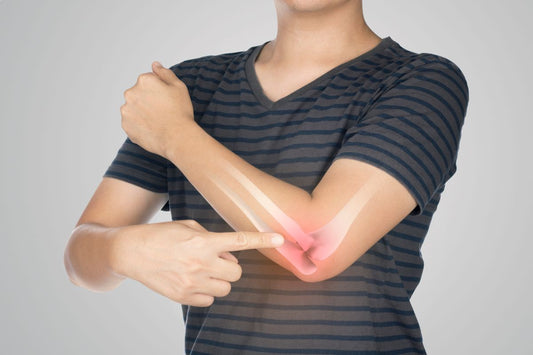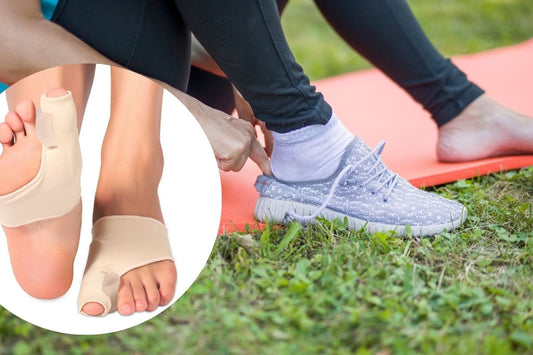Why Shoe Choice Matters for Bunions
Bunions, or hallux valgus, cause the big toe joint to protrude outward, often leading to pain, swelling, and difficulty finding shoes that fit comfortably. The wrong footwear can worsen symptoms or speed up the progression. The right footwear, however, can help relieve pressure and reduce daily discomfort — even if it won’t necessarily “cure” the bunion itself.
This guide is divided into two parts: First, we’ll cover the key features that make a shoe bunion-friendly, helping you understand what to look for when shopping. Then, we’ll share real-world footwear recommendations across different price ranges. Keep in mind — these are suggestions, not prescriptions. Every foot is different, so be sure to read customer reviews to see how these shoes have worked for others with similar needs.
1. What Makes a Shoe Bunion-Friendly?
✅ Wide Toe Box
Look for shoes that offer plenty of room in the front to prevent crowding or rubbing. Your toes should be able to splay naturally without overlapping.
✅ Soft, Stretchable Uppers
Materials like soft leather, mesh, or knit adapt to the shape of your foot — rather than force your foot to adapt to the shoe. This reduces friction over the bunion.
✅ Low or Zero Drop Heels
High heels shift pressure to the forefoot, where the bunion sits. Choose shoes with a low heel (less than 1 inch) or no elevation at all to protect the joint.
✅ Arch Support & Cushioning
Shoes with proper arch support can redistribute weight across your foot more evenly, relieving pressure from the bunion area. Cushioning helps with shock absorption during movement.
✅ Minimal Seams Over the Bunion
Internal seams or overlays can press directly on the bunion and cause irritation. Seamless designs or flexible uppers reduce this risk.
2. Best Shoes for Bunion Feet (By Budget)
💸 Budget-Friendly Options (Under $60)
Skechers Go Walk

Slip-on comfort at its best. These are lightweight, breathable, and feature a soft mesh upper that doesn’t constrict the bunion area. Perfect for casual strolls, running errands, grocery trips, or even airport days when you need something that’s easy to wear and forgiving on swollen feet.
WHITIN Barefoot Sneakers

Affordable and surprisingly comfortable, these zero-drop shoes offer a wide toe box that lets your toes spread naturally. Ideal if you’re easing into barefoot-style shoes or doing home workouts, light walks, or long days at a standing desk. They're also a popular starter shoe for people doing mobility work or foot rehab.
💰 Mid-Range Comfort (Between $60–$120)
Altra Escalante or Torin

A favorite among runners and walkers with bunions. These shoes combine zero-drop soles with a foot-shaped toe box, giving you space where you need it most. Great for gym sessions, fitness walks, travel days, or simply upgrading your daily footwear. The knit uppers flex with your movement — making them especially helpful if your bunion pain flares up after high activity.
Orthofeet Shoes
This is a footwear brand that offers a wide range of selection tailored for people dealing with multiple foot issues, including bunions, plantar fasciitis, and arthritis. These come in wide/extra-wide options and feel like walking on clouds. Great for professionals on their feet all day (nurses, teachers, retail workers) or older adults looking for stable, supportive shoes for walking or daily chores.
🏆 Premium Support (Over $120)
Topo Athletic Ultrafly

If you’re active and need a shoe that supports long miles, this one hits the sweet spot. Runners, hikers, and pickleball players with bunions often swear by its roomy toe box and structured yet comfortable fit. It's a fantastic upgrade if you want bunion-sensitive performance in an athletic shoe.
Naot or Vionic Footwear

Stylish, orthotic-friendly sandals and shoes that don’t scream “medical.” These are popular for events, casual office settings, brunches, or travel. The soft leather uppers mold to your foot over time, while the built-in arch support helps reduce pressure on the ball of the foot — a key trigger zone for bunion flare-ups.
Bonus Tip: Combine with a Bunion Corrector
Even with the most supportive shoes, chronic bunions can still flare up — especially after long days of walking, standing, or commuting. That’s where bunion correctors come in.
Toe spacers, night splints, and bunion sleeves work alongside your footwear by:
- Promoting natural toe alignment while at rest
- Reducing friction and crowding inside shoes
- Supporting recovery after extended time on your feet
- Slowing progression of bunions over time with consistent use
For example, slipping on a toe spacer after work or using a splint at night can help “reset” your foot’s alignment and give your joints a much-needed break.
It’s not a replacement for proper footwear, but it’s a helpful companion — especially for those with moderate bunions or early-stage symptoms.
Final Words
The right shoes for bunion-prone feet aren’t just about avoiding pain — they’re an investment in better movement, posture, and long-term joint health.
Whether you're heading to the gym, clocking hours at work, or enjoying a casual weekend stroll, bunion-friendly shoes can help:
- Prevent inflammation and joint stress
- Keep your feet more relaxed and naturally aligned
- Reduce the chance of corns, calluses, and pressure points
And remember — everyone's feet are a little different. Don’t hesitate to test a few styles or widths until you find what works best. Pair your footwear with small daily habits like toe stretches, occasional barefoot walking, and bunion correctors when needed.
A little intention goes a long way in keeping your feet strong, supported, and bunion-resilient.




